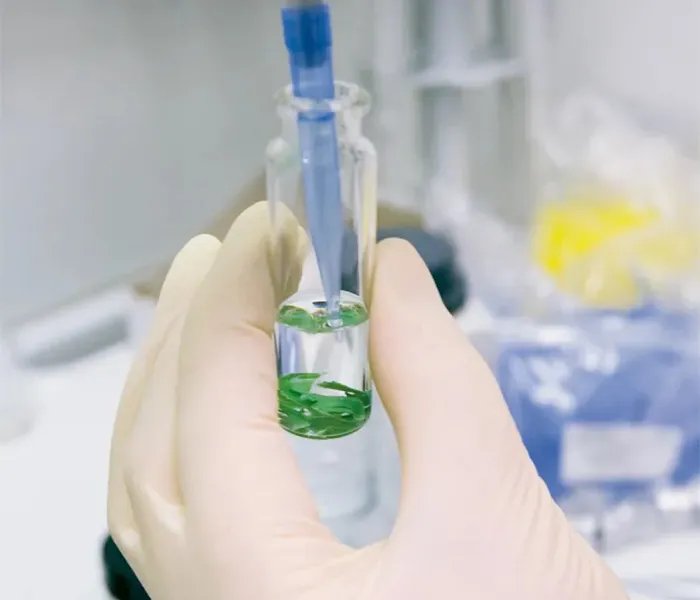2-Хлор-2-Метилпропан, обычно известный как трет-бутилхлорид, является важным органическим соединением, широко используемым в химическом синтезе и промышленных приложениях. Этот универсальный алкилгалогенид имеет решающее значение в производстве фармацевтических препаратов, топливных присадок и многого другого. В этой статье мы рассмотрим химические свойства, практическое применение и необходимые меры предосторожности, связанные с 2-хлор-2-метилпропаном.

Производитель 2-хлор-2-метилпропана
Что такое трет-бутилхлорид (2-хлор-2-метилпропан)?
2-Хлор-2-метилпропан, или трет-бутилхлорид, представляет собой алкилгалогенидное соединение с разветвленной структурой. Он состоит из центрального атома углерода, связанного с тремя метильными группами (–CH3) и атомом хлора (–Cl). Соединение обычно используется в качестве реагента в синтезе различных органических химикатов, особенно в производстве топлива и фармацевтических препаратов.
В чистом виде 2-хлор-2-метилпропан представляет собой бесцветную жидкость с характерным запахом. Он неполярен и имеет относительно низкую температуру кипения 51,7°C (125°F), что делает его полезным в некоторых процессах дистилляции и разделения.
Основные свойства 2-хлор-2-метилпропана (трет-бутилхлорида)
- Химические свойства
Главной химической особенностью 2-хлор-2-метилпропана является его реакционная способность как алкилгалогенида. Он подвергается реакциям нуклеофильного замещения, которые являются ключевыми во многих реакциях органического синтеза. Одной из наиболее распространенных реакций является замещение атома хлора другими нуклеофилами, такими как гидроксид (OH–) или алкоксиды (RO–), что приводит к образованию новых соединений. -
Физические свойства
- Внешний вид: Бесцветная жидкость.
- Молекулярный вес: 92,57 г/моль
- Плотность: 0,872 г/см³
- Температура кипения: 51,7°C
- Температура плавления: -109,8°C
Благодаря этим свойствам 2-хлор-2-метилпропан идеально подходит для использования в определенных лабораторных установках и промышленных целях, где важны низкие температуры кипения и стабильность при комнатной температуре.
Распространенные применения 2-хлор-2-метилпропана (трет-бутилхлорид) в промышленности
2-Хлор-2-метилпропан служит важным промежуточным продуктом в производстве различных химикатов. Ниже приведены некоторые из его основных применений:
- Органический синтез
2-Хлор-2-метилпропан обычно используется в качестве исходного материала в реакциях органического синтеза. Его способность подвергаться нуклеофильному замещению делает его идеальным реагентом для введения алкильных групп в другие соединения. Эта реакция имеет решающее значение в производстве более ценных химикатов, используемых в фармацевтике, агрохимикате и специальных полимерах. - Производство трет-бутилового спирта
Основное промышленное применение 2-хлор-2-метилпропана — производство трет-бутилового спирта (ТБС), который является важным химикатом в производстве пластмасс, растворителей и топлива. Это достигается с помощью процесса, известного как гидролиз, где 2-хлор-2-метилпропан реагирует с водой в присутствии катализатора, образуя ТБС. - Топливные присадки
2-Хлор-2-метилпропан также может использоваться в качестве прекурсора для производства топливных присадок. Эти присадки помогают улучшить характеристики сгорания бензина и дизельного топлива, увеличивая производительность двигателя и снижая вредные выбросы. - Растворитель в лабораториях
В лабораториях 2-хлор-2-метилпропан часто используется в качестве растворителя для различных реакций, особенно в экспериментах по органической химии. Его способность растворять многие неполярные соединения делает его универсальным растворителем для определенных типов реакций, требующих среду с низкой температурой кипения.
Правила техники безопасности при обращении с 2-хлор-2-метилпропаном (трет-бутилхлоридом)
Хотя 2-хлор-2-метилпропан имеет множество промышленных и лабораторных применений, важно обращаться с этим химическим соединением с осторожностью, поскольку оно представляет определенную опасность для здоровья и безопасности. Ниже приведены основные соображения по безопасности:
- Воспламеняемость
2-хлор-2-метилпропан легко воспламеняется, и его пары могут образовывать взрывоопасные смеси с воздухом. Поэтому крайне важно хранить и использовать это химическое вещество вдали от открытого огня, искр или источников высокой температуры. Работать с 2-хлор-2-метилпропаном следует только в хорошо проветриваемых помещениях, в идеале в вытяжных шкафах. - Вдыхание и контакт с кожей
Вдыхание паров 2-хлоро-2-метилпропана может раздражать дыхательную систему и вызывать такие симптомы, как головокружение, головная боль и тошнота. Длительное воздействие или высокие концентрации могут привести к более серьезным последствиям для здоровья, включая повреждение центральной нервной системы. Прямой контакт с кожей также может вызвать раздражение, а длительное воздействие может привести к дерматиту. - Надлежащее защитное снаряжение
Чтобы свести к минимуму воздействие, при работе с 2-хлор-2-метилпропаном следует использовать такие меры предосторожности, как перчатки, защитные очки и средства защиты органов дыхания. В случае разлива или утечки следует надевать средства индивидуальной защиты (СИЗ), чтобы избежать прямого контакта с химикатом. - Хранилище
2-Хлор-2-метилпропан следует хранить в плотно закрытых контейнерах в прохладном, сухом и хорошо проветриваемом помещении, вдали от несовместимых веществ, таких как сильные окислители. Убедитесь, что место хранения оборудовано соответствующим противопожарным оборудованием.
Заключение: почему 2-хлор-2-метилпропан необходим в промышленности и исследованиях
2-Хлор-2-Метилпропан является универсальным и ценным химическим соединением, широко используемым в органическом синтезе, производстве топлива и лабораторных приложениях. Его способность реагировать в реакциях нуклеофильного замещения делает его важнейшим реагентом в создании различных химических продуктов, от фармацевтических препаратов до растворителей и топливных присадок. Однако при работе с этим химикатом необходимо соблюдать надлежащие меры безопасности из-за его воспламеняемости и потенциальной опасности для здоровья.
Понимая свойства, применение и правила техники безопасности 2-хлор-2-метилпропана, промышленные предприятия и научно-исследовательские лаборатории смогут эффективнее использовать это соединение, обеспечивая при этом безопасное и эффективное обращение.
Если вы все еще колеблетесь и не знаете, какой 2-хлор-2-метилпропан выбрать для повышения эффективности производства, то я предлагаю вам рассмотреть продукцию марки KBR. КБР пользуется высокой репутацией в отрасли благодаря своему превосходному качеству и надежной работе. Выбирая KBR, вы можете получить максимальный эффект и повысить эффективность производства.





